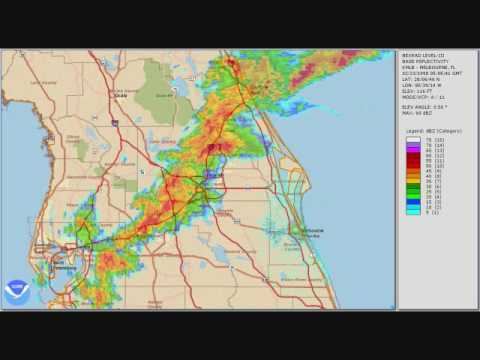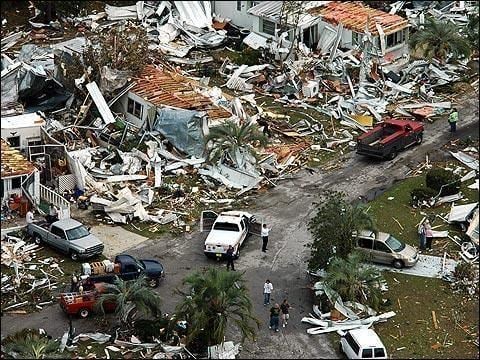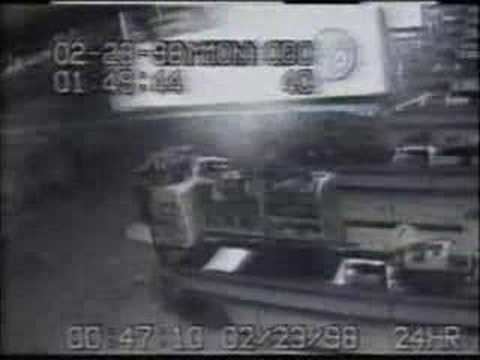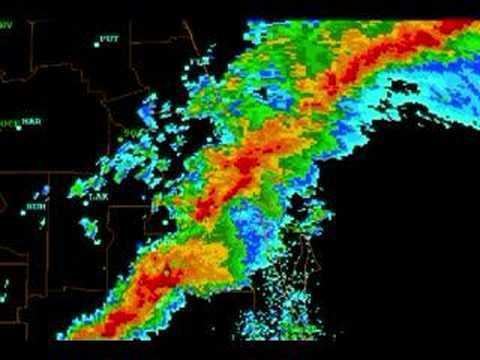Start date February 22, 1998 | ||
Similar 1998 Gainesville–Stoneville tornado o, 1998 Dunwoody tornado, 2007 Groundhog Day torna, May 2007 tornado outbreak, 1994 Palm Sunday tornado o | ||
The 1998 Kissimmee tornado outbreak of February 22–23, 1998, was a devastating tornado outbreak, the deadliest tornado event in Florida history, that is sometimes known as The Night of the Tornadoes. Affecting the I-4 corridor of Central Florida, including the Greater Orlando area, the tornadoes—among the strongest ever recorded in Florida—produced F3 (in some cases, near-F4) damage, killed 42 people, and caused 260 injuries. The previous record for the highest tornado death toll in Florida history was 17 on March 31, 1962. In all, 12 tornadoes touched down, one of which was long lived and tracked for nearly 30 miles (48 km). The first major, F3 tornado of the outbreak came at around 11:40 pm in Winter Garden, near Windermere in Orange County, killing three people. The deadliest and most destructive tornado of the night struck the Kissimmee–St. Cloud area, where 25 people were killed, and produced near-F4 damage. Only two other tornadoes, both rated F4, in 1958 and 1966 produced more intense damage in Florida. Another F3 hit in Seminole County, near Sanford, and in Volusia County, killing 13. The last tornado of the night was a weak F1 that hit the town of Cape Canaveral in Brevard County.
Contents

Meteorological synopsis

During the night of February 22 and the very early parts of February 23, severe weather formed over Central Florida. Radar data indicated that several long-lived supercell thunderstorms developed over the eastern Gulf of Mexico late on February 22, affected the Tampa Bay Area, and eventually produced seven tornadoes between about 11 pm on Feb. 22nd and 2:30 am on Feb. 23rd. As these storms swept through Central Florida, the tornadoes killed 42 people and seriously injured more than 260 others. This was the deadliest tornado outbreak in Florida’s history after the storm that killed 17 people on March 31, 1962, in Santa Rosa County. The tornadoes were strong due to an abnormally strong jet stream with warm, humid air out ahead of the cold front. This is common in the El Niño phase of the El Niño-Southern Oscillation (ENSO) during the Florida dry season (November 1 - April 30). During El Niño the jet stream is typically stronger and further south near or over Florida in the winter and spring. This greatly increases the odds that conditions will be favorable for strong tornado development.
Intercession City to Port St. John

This devastating, long-tracked tornado was initially assigned an F4 rating, but NWS assessments later reduced this to high-end F3 intensity. This ranks it as the deadliest tornado in the United States to not reach F4 intensity or higher. The tornado began near Intercession City, only 8 mi (13 km) southeast of Walt Disney World Resort, and moved northeast into Campbell and thence to Kissimmee. The tornado first did some mild damage to homes in a retirement community near Poinciana Office and Industrial Park. In and near Campbell, a few other homes were damaged. Next, the tornado rapidly intensified as it moved into Kissimmee, flattening part of The Shops at Kissimmee shopping center. Afterward, the tornado crossed the north part of Lake Tohopekaliga.

Later, the tornado crossed U.S. Route 441 and reached its maximum intensity as it struck the Ponderosa Pines RV park. In the RV park, at least 10 people died and almost all of the 200 residences, including both RVs and mobile homes, were destroyed. Many of these residences had their frames thrown, stripped, and wrapped around trees. Many trees were snapped and uprooted as well. Nearby, the Morningside Acres mobile home park was devastated as well. Upon leaving the Ponderosa Pines and Morningside areas, the tornado heavily damaged homes next to a school in the Lakeside Estates subdivision of Buenaventura Lakes.

After devastating the Kissimmee area, the tornado mostly impacted rural, swampy areas in Orange and Brevard Counties, though it hit a few lakeside homes in Lake Hart and Lake Mary Jane. It lifted 8 mi (13 km) east-southeast of Christmas, west of Port St. John—just before the Great Outdoors RV Park, which, according to the NWS, was "one of the largest in the United States, housing 1,000 recreational vehicle lots." The same storm produced a much weaker, F1 tornado just a few miles east of the RV park. Along the entire path, 1,000 structures were damaged or destroyed. The worst damage occurred in the Kissimmee area. Numerous homes, RVs, and mobile homes were destroyed along the path, including several well-built homes that were nearly leveled. At least one new home, built of stucco and concrete blocks, was flattened except for its front entryway and part of a wall.

